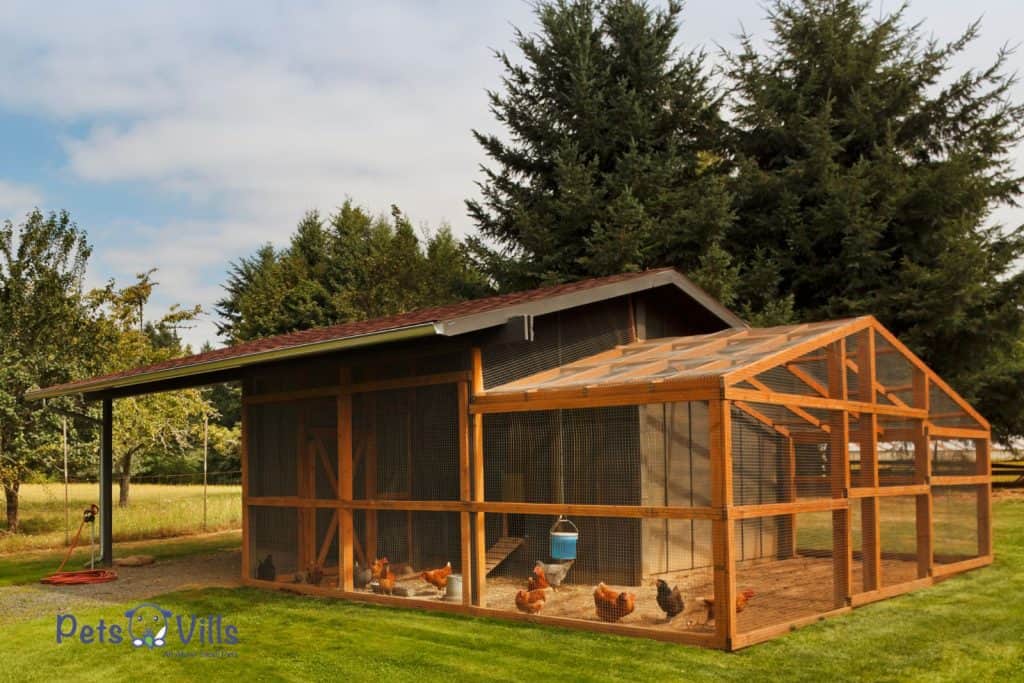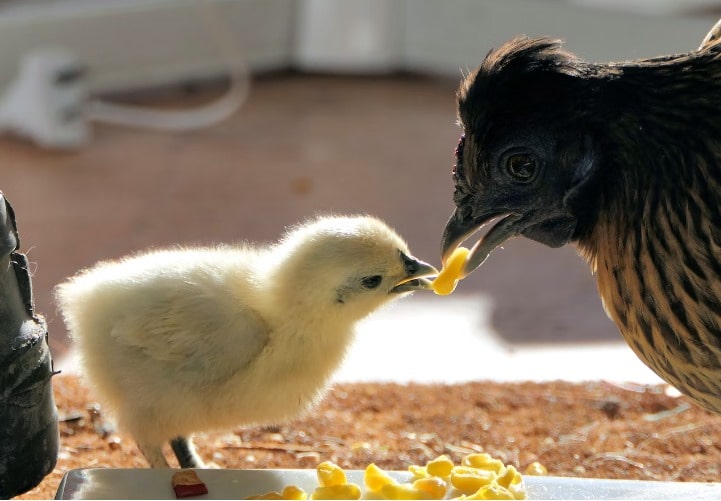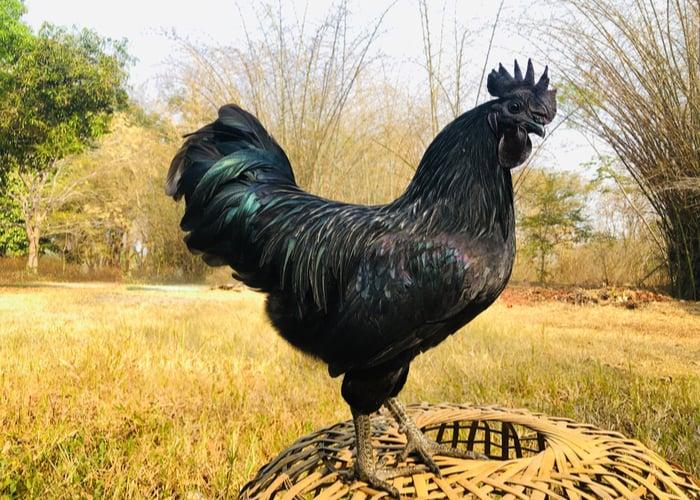Ever found yourself entranced by the shimmering allure of a gemstone?
Now, imagine that in the form of a chicken.
Yes, you heard it right!
As an expert in poultry and all its nuances, I introduce you to the Black Diamond Chicken – nature’s ornate marvel.
Majestic, mysterious, and undeniably unique, these birds aren’t just your average backyard chickens.
In the paragraphs that follow, prepare to embark on a captivating journey through the history, genetics, and remarkable traits of the Black Diamond Chicken.
Table of Contents
The Enigmatic Origin of Black Diamond Chickens
Venturing into the past often provides context for the present. Let’s set the stage as we unearth the intricate backstory of these feathered wonders.
A Brief Journey Through History
Delving into ancient records, Black Diamond Chickens emerge as coveted creatures, mentioned in tales of royalty and treasured by civilizations long gone. Their mystique, largely rooted in their mesmerizing appearance, has garnered intrigue for centuries.
The Role of Geneticists Like Danny Eiland
Enter Danny Eiland, a geneticist whose pivotal work on the Black Diamond’s genes reshaped our understanding. By meticulously studying their genetic blueprint, Eiland provided invaluable insights into their distinct makeup.
The Concept of “The Mixing Pot”
The Black Diamond Chicken is a confluence of diverse breeds, a true genetic mixing pot. This hybridization, curated over years, led to the birth of a chicken variety that combines the best of all worlds.
The Influence of Ayam Cemani and Silkie Heritage
The Black Diamond doesn’t stand alone; it owes its lineage to two prestigious breeds: Ayam Cemani and Silkie.
Traits Inherited from the Silkie Chicken
From the Silkie, the Black Diamond inherits its soft, almost silk-like feathers and that undeniable poise. Their tender demeanor and unmistakable charm can be traced directly to this revered ancestry.
The Ayam Cemani Connection
The Ayam Cemani, often dubbed the ‘Lamborghini of Poultry,’ lends the Black Diamond its profound blackness. This, coupled with a dominant gene, paints the Black Diamond Chicken in hues so deep and mesmerizing.
The Black Diamond Chicken’s Physicality
When it comes to the Black Diamond Chicken, there’s more than meets the eye. Yet, what does meet the eye is nothing short of extraordinary.
The Anatomy Unveiled: From Feathers to Feet
The Black Diamond Chicken boasts a cascade of inky feathers, often giving the impression of liquid obsidian. These feathers transition seamlessly to their feet, marked by a notable feature: five toes, a rarity in the poultry world.
The Mysterious Coloring: Beyond Black Feathers
Not just their feathers, but from beaks to bones, the Black Diamond Chickens possess a deep black, attributed to fibromelanosis.
Size and Weight Parameters: Hens vs. Roosters
While hens average 5-6 pounds, roosters are sturdier, weighing between 7-8 pounds.
The Science Behind Black Skin, Soft Feathers, and Five Toes
Diving into genetics, the Black Diamond’s unique features are no accident. Specific genes dictate their soft feathering, while others account for the additional toe. The fibromelanosis gene? That ensures their strikingly deep pigmentation.
Unusual Characteristics and their Genetic Basis
While many chickens exhibit standard traits, the Black Diamond stands apart. Their black skin, for instance, is a result of increased melanin, while their five-toed feature is inherited, showcasing the wonders of genetics.
Understanding the Black Diamond Chicken Personality
Beyond their beguiling appearance, Black Diamond Chickens possess personalities that are just as enchanting.
Temperamental Traits: Are They Suitable for You?
Diamond Chickens, with their majestic appearance, have a surprisingly gentle temperament. They’re perfect for families, bonding deeply with caretakers and showing affection.
The Social Dynamics: How Well Do They Get Along?
These chickens excel in social settings, rarely showing aggression. Their amicable nature, paired with playful antics, makes them flock favorites and compatible with diverse breeds.
Black Diamond Chicken Eggs
Laying aside their physicality and personality, Black Diamond Chickens have another ace up their sleeve – their eggs.
The Color Spectrum: Light Brown to Cream
Their eggs are a sight to behold, ranging in colors from a muted light brown to a delicate cream. These hues offer a stark, beautiful contrast to their dark plumage.
Nutritional Profile: What Makes These Eggs Unique?
Black Diamond Chicken eggs are not just visually pleasing but are nutritionally rich. Packed with essential proteins, vitamins, and minerals, they are a wholesome addition to any diet.
Broodiness and Raising Chicks
A notable trait among Black Diamond hens is their maternal instinct. Many exhibit a strong broodiness, keenly nurturing their eggs and, subsequently, their chicks with unmatched dedication.
The Black Diamond Rooster: A Detailed Portrait
While the hens have their charm, the Black Diamond Roosters are in a league of their own. They embody the majestic nature of this breed to its fullest.
What Sets the Black Diamond Rooster Apart?
With a commanding presence, the Black Diamond Rooster is the embodiment of confidence and grace. Their longer tail feathers, often with iridescent hues, and pronounced combs make them standout figures in any flock.
The Rooster’s Role in a Flock
Contrary to some chicken breeds, Black Diamond Roosters are not just for show. They play a pivotal role in maintaining peace, guiding the hens, and often alerting the flock to any potential dangers, living up to their role as vigilant protectors.
The Guide to Raising Your Own Black Diamond Chickens
If the allure of the Black Diamond Chicken has captured your imagination, here’s a comprehensive guide to raising them right.
Best Practices for Farm Management and Housing
Offering a conducive environment is paramount for these special birds. The foundation? Proper housing and efficient farm management.

Site Selection for Coop and Run Area
Choose a coop spot that provides both sunlight and shade, and enough space for the birds to move freely.
Secure Fencing to Protect from Predators
Strong fencing is essential. Consider a double-layered mesh, embedded deeply, to fend off predators.
Orientation and Ventilation of Chicken Coop
Direct the main entrance eastward for morning light, and ensure good ventilation for health and to counteract odors.
Nesting Box Guidelines: Size, Number, and Placement
Allocate one nesting box for every 4-5 hens, placed in a calm, low-light area. Size matters: 12×12 inches is recommended.
Feeder and Waterer Placement for Easy Access
Position these essentials within a chicken’s easy reach, but away from contamination sources.
Waste Management: Bedding and Manure Handling
Opt for absorbent materials like pine shavings, and maintain cleanliness by regularly changing them.
Biosecurity Measures: Disinfection and Quarantine
Consistently disinfect surroundings and tools. New or returning birds should be isolated for a month to prevent disease spread.
Coop Lighting: Natural vs. Artificial
While natural light is preferred, artificial light can supplement during shorter days, aiming for 14-16 hours daily.
Seasonal Adjustments: Heating and Cooling Solutions
Winter requires insulation, and possibly heat lamps. Summer demands adequate ventilation and fans.
Routine Inspection and Maintenance Checklist
Periodically check the coop for wear and tear, pests, or disease signs. A maintenance list ensures everything, from leaks to potential predator entries, is monitored.
Nutritional Needs: A Complete Feeding Guide
- Starter Feed: Begin with a nutrient-rich feed tailored for chicks.
- Layer Feed: Transition to calcium-enriched feed as they approach egg-producing age.
- Protein Content: Ensure they receive adequate protein for muscle development.
- Grit Supply: Essential for aiding digestion.
- Vitamin Supplements: Don’t skip vital vitamins like A, D, and E.
- Fresh Greens: Regular access boosts nutrients and overall health.
- Fresh Water: Always provide a clean, constant supply.
- Organic vs. Non-Organic Feed: Consider the benefits and downsides of each.
- Snack Policy: Limit treats to only 10% of their diet.
- Feeding Schedule: Stick to consistent timings and quantities.

The Complete Healthcare Guide
Ensuring the health and well-being of Black Diamond Chickens requires a blend of preventive and reactive measures.
Common Illnesses and Their Treatments
Black Diamond Chickens can encounter health issues like respiratory or fungal infections. Recognizing symptoms early facilitates prompt treatment and prevents complications.
Vaccination: Everything You Need to Know
Vaccines are essential in protecting poultry from diseases. Partner with a vet to tailor a vaccination schedule for Black Diamond Chickens.
The Ultimate Buying Guide for Black Diamond Chickens
Venturing into the world of Black Diamond Chickens? Knowing where and how to make your purchase is essential.
Comparing Sources: Hatcheries vs. Local Breeders
Hatcheries often offer volume, with a broad selection of breeds, but they might lack the personal touch and detailed history of each bird.
Local breeders, on the other hand, can provide detailed lineage information and might follow more humane rearing practices, but they may have limited stock.
The Checklist You Didn’t Know You Needed Before Making a Purchase
Before buying, ensure you’ve checked the health of the bird, sought references for the seller, and inquired about the bird’s lineage and any vaccinations. If possible, visit in person to assess living conditions.
Pricing Parameters: What Influences the Cost?
Factors include the chicken’s age, its lineage and rarity, current demand, and any certifications the breeder might have. Always balance cost with quality and ethical considerations.
Adaptability & Environmental Factors
Understanding the environmental needs of Black Diamond Chickens can ensure their well-being.
Thriving in Different Climate Zones
Black Diamond Chickens are versatile, managing well in both warm and cooler climates. However, like all chickens, they need protection from extreme conditions.
The Ideal Setting: Backyard vs. Farmyard
While they can adapt to backyard settings, providing them with a farm-like space allows for more natural behaviors and better social dynamics among the flock.
Conclusion
Black Diamond Chickens are a unique blend of beauty, resilience, and intrigue. Whether you’re drawn to their mysterious aesthetic or their potential as productive poultry, understanding their needs and peculiarities is vital.
With the right knowledge and care, these birds can be a delightful addition to any poultry enthusiast’s collection.
FAQs
Are Black Diamond Chickens Good For Homesteading?
Absolutely! They’re hardy, adaptable, and can be a productive part of a sustainable homestead.
How Many Eggs Can I Expect in a Year?
On average, you can expect around 200-250 eggs annually per hen.
Any Hidden Costs in Raising Black Diamond Chickens?
Apart from the basics, consider costs for healthcare, potential housing upgrades, and specialty feed.
Can I Crossbreed Black Diamond Chickens?
Yes, they can be crossbred, but it’s essential to understand the genetics to predict the outcome.
How can black diamond chickens be best integrated into a mixed-breed flock?
Slow integration, monitored interactions, and ensuring ample space can lead to a harmonious mixed flock.
What are some of the most common misconceptions about black diamond chickens?
Some believe they’re entirely black, even on the inside – this isn’t true. Others might undervalue their egg-laying capabilities due to their ornamental appearance.
Alina Hartley is a small-town girl with a ginormous love of bearded dragons. It all started with Winchester, a baby bearded who was abandoned at the shelter by his former owners because of a birth defect that caused one front leg to be shorter than the other. Alina originally went to the shelter looking for a guinea pig, but one look at Winchester and it was love at first sight. From that day on, Alina has dedicated her life to learning everything she can about bearded dragons. She loves helping new beardie parents start their incredible journey with these magnificent reptiles.
Follow her on:
LINKEDIN
TWITTER.
Read her latest articles HERE
Learn more about her HERE.

